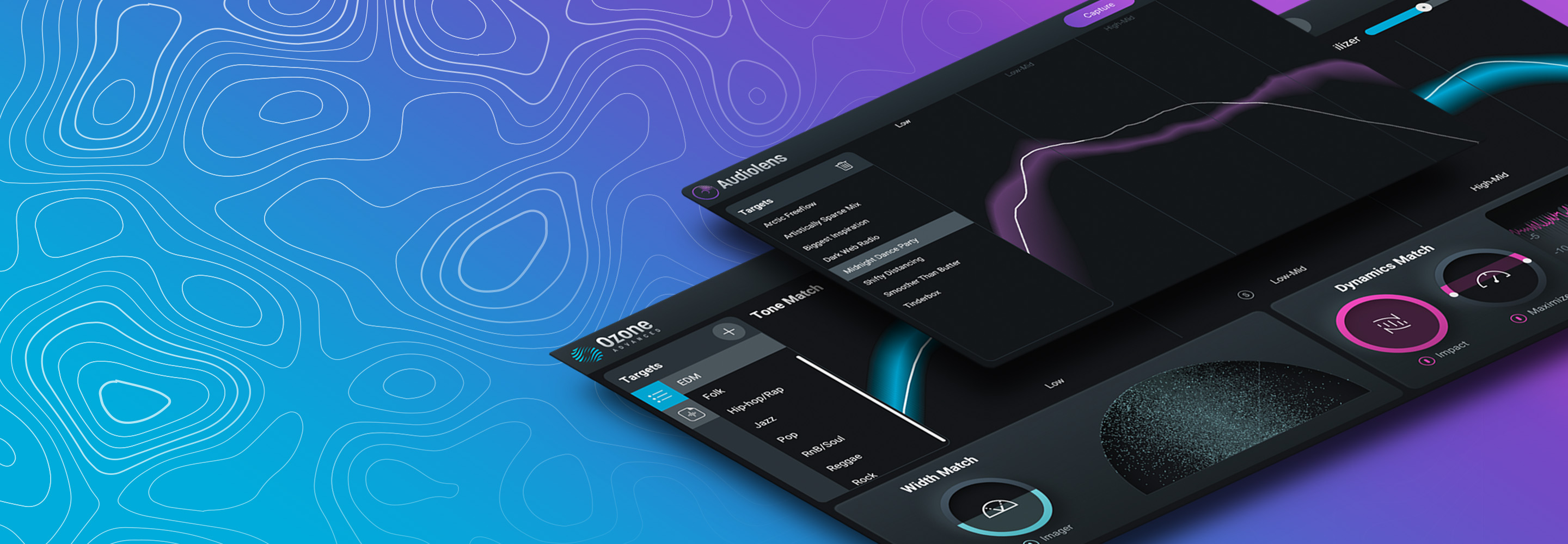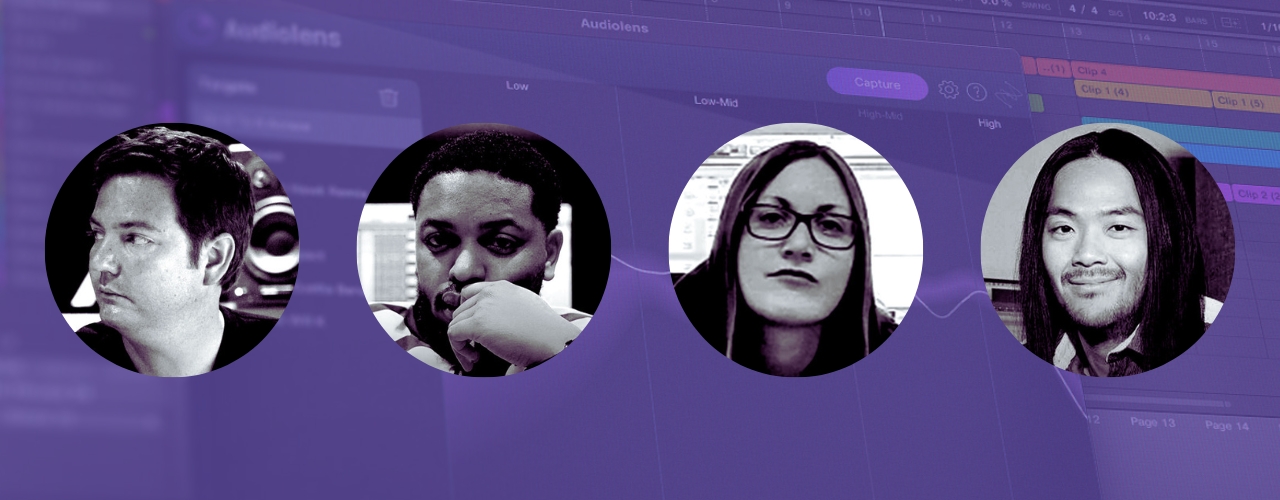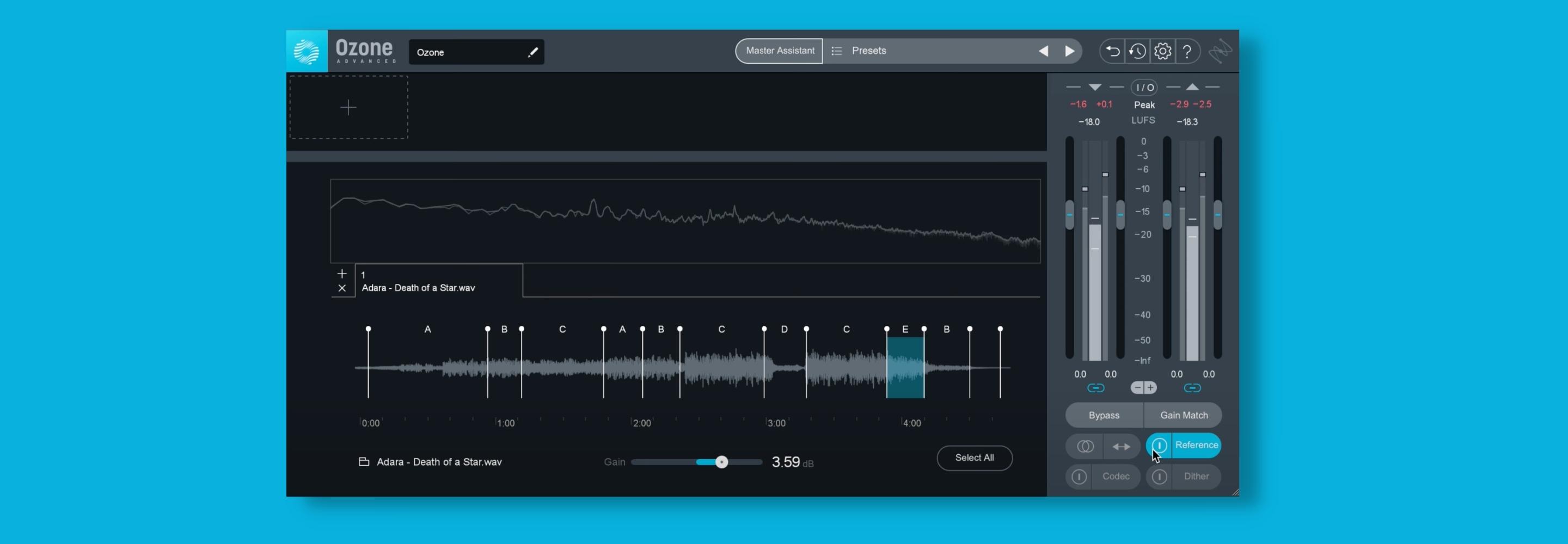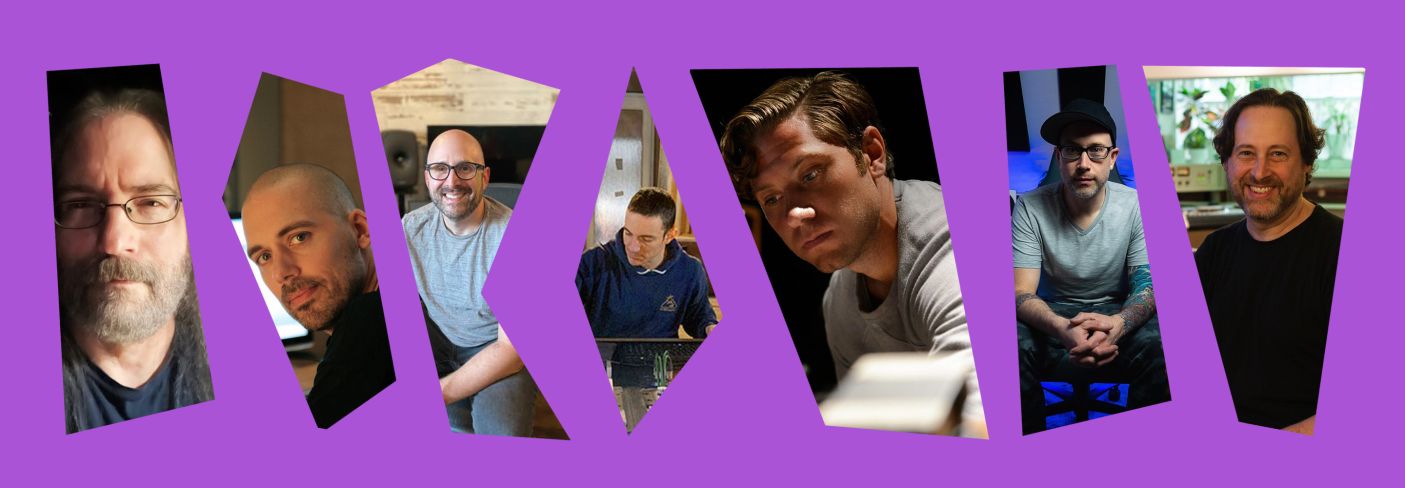
From the pros: the reference tracks they use on every mix
Ever wonder how the pros get their mixes sounding so good? Uncover the essential reference tracks used by top mixing and mastering engineers for consistent and impactful results.
Reference tracks are professionally produced and mixed songs that engineers use as sonic benchmarks during the mixing and mastering process to guide their decisions on elements like balance, EQ, dynamics, and overall loudness.
What if I told you that some engineers love to use reference tracks, while others don’t?
It turns out, referencing can be a bit of a contentious topic. In this article, we spoke to friends and peers in the mixing and mastering world about reference mixes. Some of them will tell us their favorite tunes, others will highlight the precarities of relying too heavily on the process.
On the mix side, I’ll be checking in with Adam Hawkins and Marc Daniel Nelson. For those who do both mixing and mastering, I’ll talk to Eric Mitchell and Johannes Ahlberg. And on the mastering front, I’ll be speaking with Adam Matza, Mat Leffler-Schulman, and Bob Macciochi.
Get these reference tracks to use in your mixes using


Audiolens
Before we begin: common threads among disparate fields
In these conversations, you’ll notice two themes crop up.
The first is a general perspective on the concept of using reference mixes in one’s daily routine. Some of these engineers are all for it, others eschew it entirely. Remember that neither camp is wrong: these are all working professionals who do great work.
Second, you’ll hear a lot of these engineers mention tunes they revisit over and over and again – their touchstones, for lack of a better word. Many engineers have favorite songs that ground them in times of sonic strife.
You’ll get to see interesting takes on this concept as well.
1. Marc Daniel Nelson
These days, many people often encounter Marc Daniel Nelson through his YouTube content, and he’s easily recognizable as the real deal. His approach is calm, measured, yet singularly impressive: he makes dozens of thoughtful moves until everything suddenly sounds like a record. His attention to detail has landed him gigs working with everyone from Colbie Callait to Geoff Emerick.

“Reference mixes are a little interesting,” he told me. “It kind of became a trend lately.”
While Marc does listen to specific material “that kind of gets you into the headspace of what the low bass, midrange and high frequencies are doing in a song,” he does bring up the pitfalls of relying too heavily on references.
“What you’re doing is listening to the EQ curve and balance that you like from a specific song, which might just have a completely different vibe,” he told me. “This is my view, obviously, and it’s a little different than most people, but that doesn’t mean I don’t like listening to specifics.”
He mentioned that he does have touchstones – music he might throw on to connect with the idea that “it's just all about really good balance and taste.”
The first one he brought up was the album Tracker, by Mark Knopfler.
“It's an absolute stunning-sounding kind of Americana folk – I guess it wouldn't be considered Americana, because he's British – but that kind of folky, beautiful, very high fidelity, massive sounding, gorgeous blend of low end and high end.”
Another album he suggested was Encanto by Sergio Mendes.
“That was an album that Bill Schnee mixed,” he told me. “I was kind of around when he was mixing that, and I spent a long time understanding what he was doing, because it was a Will.i.am-produced Sergio Mendes album. So you get that kind of Brazilian 66 vibe, the Latin vibe, there's some hip hop elements, and there's a low end on that album that I've never heard go deeper on any other record. It's pretty cool.”
Still, he prefers to keep his reference time separate from his mixing time. “I just don't like putting it on the second I hit play and then going and starting my mix,” he said. “I always go into the devil's triangle then, because you're like ‘I got the vocal right – but the snare doesn't sound right now!’"
2. Adam Hawkins
Adam Hawkins’ mixes, especially his work with Twenty-One Pilots, have constituted some of my own personal references.

Tracks like “Jumpsuit” serve as reminders of what a well-balanced, dynamic, yet blisteringly heavy mix can sound like; I referenced it extensively when I mixed tunes like “Heavy Water” by Glorian.
I was eager to hear if he had any steadfast reference tracks.
It turns out he does not. His approach is way more practical – dare I say, way more pragmatic:
“I have to find a source or a reference that sounds like what I want it to sound like in the end,” he told me.
He prefers this approach over “just making it sound great at the moment, because that might not translate tomorrow – or it might not translate when I go upstairs for lunch and come back down!”
I identified with that statement. It was heartening to hear one of my favorite mixers mention his own moment-to-moment subjectivity, and how his perception changes throughout the course of a day.
“That's why I'm constantly finding a reference.” He told me. “I'm like, I gotta make it sound like that – and then when it's close to that? I'm done.”
Adam also keeps an ear on current trends within genre constraints.
“Usually I will have Apple music with their ‘lossless’ playing – maybe a full playlist. Like if it's a pop song, I'll have their current pop playlist just playing and get an idea of the tone of things that are currently popular.”
Then he finds the most suitable comp. “I have to sort through and listen to things, and then I find something that will work if I go for this kind of thing, so the drums of this song would be great, or the guitar from this part.”
As for touchstone mixes?
“I've kind of given up on that because I'm trying to not just repeat what I've done before,” he told me. “I want it to always be something fresh. I want to find something current to reference, not go backwards.”
This extends to the references artists might give him to work from.
"A band's not going to come to me and say, ‘make this sound like an 80’s rock band’ and actually, genuinely want it to sound like that. They want it to sound like a modern version of that.”
3. Eric Mitchell
Eric Mitchell, known for his work with Glassjaw and Head Automatica, is a hybrid mixing and mastering engineer who’s carved a very interesting niche for himself. He’s a fun guy to talk with, and his perspectives are quite fresh.

Often, he doesn’t receive stems or tracks from his clients; they just send over their whole session and he works from there, using whatever DAW they’re using.
His approach to reference material was fascinating.
“I think reference tracks are great and I use them all the time,” he told me. “For new clients especially, it's huge because, you know, you can ask five people to describe the sound of a song and they'll give you five different answers, just because everybody perceives or describes sound differently.”
In a way, he uses reference mixes to “eliminate any miscommunication.” He’ll ask a new client to provide a few tracks that illustrate what they want in their mix, things like, “where the drums sit, how loud is it, what's the tonal balance – how crispy is the top; how fat is the bottom. All of those things.”
Another surprising element of his perspective: key is, well, key.
“I also ask for the references to be in the same key of the track,” he told me. “For things like EDM, that is crucial, because if someone sends me a track where the root is a G, and then they send me a reference that's in E? The balance of that track – the subs, where everything goes – is in a completely different area.”
That made so much sense. I expressed I’d never thought of it like that. He reinforced the point. “It’s so important to getting an apple to apples understanding."
I asked if this was particular to the EDM world. “Well, even rock too,” he replied. I just had this artist from L.A. They're tuned in drop D, and the reference they sent me was Knocked Loose, which is like drop G.”
“Oh boy,” I interjected.
“It's like, we literally can't get your stuff sounding the same because they're tuned like six steps below you!”
4. Johannes Ahlberg
Johannes Ahlberg is not only a talented engineer, but also the developer behind the boutique plugin brand Noisebud. His thorough understanding of digital processing allows him to achieve an analog warmth, even though he works entirely digital.
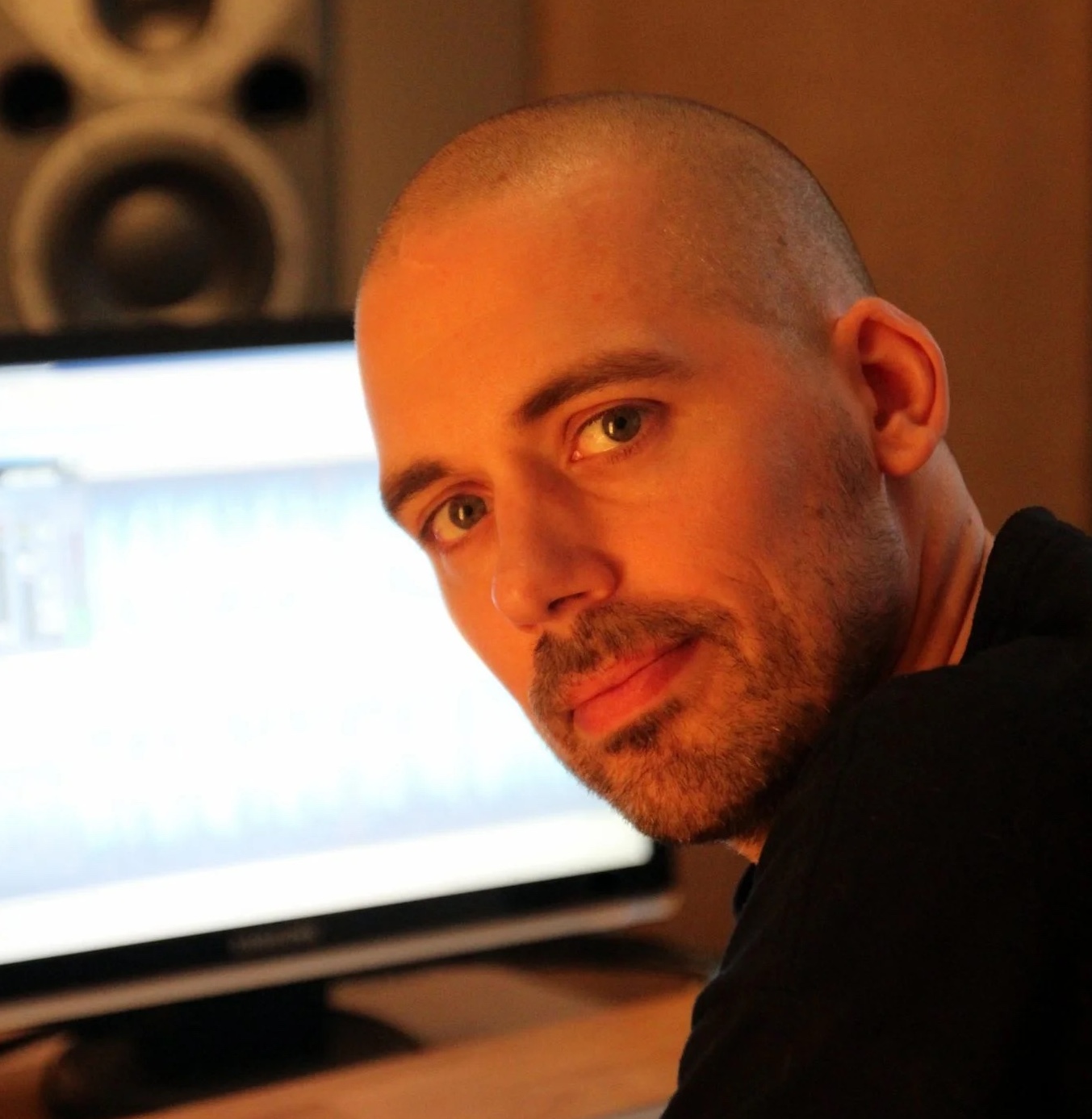
Since I’ve known Johannes a while – he even named a parameter in a plugin after me – I can always rely on him to give an interesting take, one that directly appeals to artists who may want to handle everything from production to mastering.
“I don't use references while working,” he told me. “If a client gives any reference tracks, I usually listen and store how they sound in the back of my head. The chance that a sound from one mix can be applied straight to another is about as high as the odds of winning the lottery – but it's useful for getting an idea of what the client is after. It’s often more about a feeling than the actual sound.”
Still, he does use “different reference tracks to see if my finished masters hold up after streaming services apply their loudness normalization.”
This is something I do as well. Songs like “Ferris Wheel” by Sylvan Esso and “Jumpsuit” by Twenty-One Pilots sound loud in both normalized and non-normalized contexts.
Indeed, many are beginning to notice there’s a new loudness war afoot, one that involves tricking LUFs-based normalizers into thinking your mix is quieter than it really is. But that’s the subject of a different article entirely.
On his own work, Johannes stresses that he has “a bunch of reference tracks that represent different kinds of arrangements and intensity for this purpose. The reference doesn’t necessarily need to be in the same genre as the track I’m working on – it’s more important that it’s built similarly in terms of arrangement.”
For example:
“If the track I’m working with has a one-minute soft intro before going full-on, I’ll use a reference with a similarly long intro. If the song is full-on from start to finish I'll use a reference that’s full-on as well. I do this because of how LUFS are measured. Streaming services use the integrated value which represents the average of the whole song. So, to compare a song that's full-on from start to end with a song with a one minute long soft intro won't give you any insight if your work is well done or not. I perform the comparison with all music normalized to -14 LUFS integrated.”
One mix he spotlit? “Bad News” by Melody Gardot.
“I often use [it] as a loudness reference for songs that share the same intensity, regardless of genre.” He told me. It might not be everyone’s cup of tea, “but it oozes vibe – and plays ridiculously loud on streaming platforms.”
5. Adam Matza
Adam Matza is the founder of Magic Ears Mastering, and his work spans multiple genres, from rock and pop to electronic and hip hop. He’s mastered the work of grammy-winning engineers like Bob St. John, and he’s worked with artists like Consolidated and Meat Beat Manifesto.

Adam is more on the “anti-reference” camp in his daily practice. “I don't use reference tracks,” he told me. “I trust my musicality, and then I further trust that when somebody tells me, ‘this is the way I want it to sound?’ It’s the way they want it to sound. It's not my place to tell them they're wrong.”
He prefers to listen to the mix “before anybody pays me anything” and have a conversation with the client.
“I'll say, did you want there to be this much, you know, ‘fill in the blank?’ Were you going for this aesthetic? These are the questions that I'll often ask.”
And if the answer is yes, “that's all I need to know.”
Still, he does have his touchstones – songs that get him in the mood to do the great work he does.
“‘Without Me’ by Eminem,” he declared, proudly. “I just think it's a perfectly mixed and balanced song, and I love the song. It's funny. It cracks me up. From a production standpoint, it's amazing.”
Another tune he mentions is “Morph the Cat” by Donald Fagan.
Those are the two that immediately come to mind. They're just some things that I'll go back to.”
He brought up an interesting point regarding rock music, however:
“As far as rock goes,” he said, “it's tough because the things that I listened to when I was younger have been so changed over the years with quote unquote remastering.”
I’ve found this to be the case as well: if you’re over the age of 30, you have to be careful when you’re choosing a reference from your youth, because remastering really does change the sound.
For instance, I often reference OK Computer by Radiohead – but I use the version I bought when I was 14 years old, ripped to CD. Even though it’s not the highest resolution copy available, I don’t need it to be: it’s an emotional reference, and I want it to sound exactly as I remember it.
6. Mat Leffler-Schulman
Mat Leffler-Schulman runs Mobtown Records, and has mastered countless records over the years, working with Beach House, Dan Deacon, and Jon Batiste. He masterfully mastered an acoustic record for me – Ari and the Buffalo Kings’ In The Altogether.
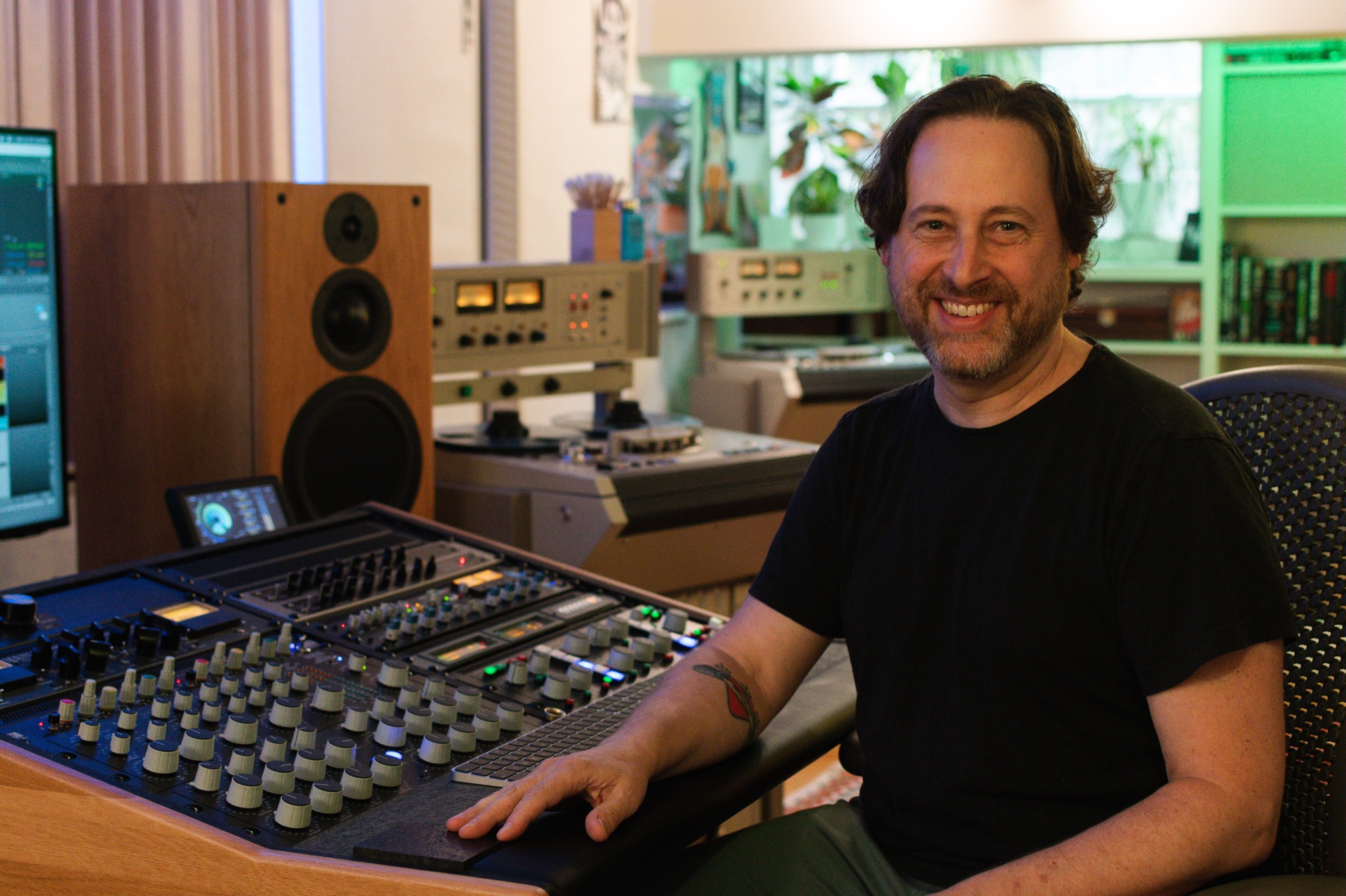
I love working with Mat; you send him a mix, and it comes back sounding the same but louder and better – exactly what I want in a mastering engineer if I’m not handling it myself.
“I go back and forth with references,” he told me. “Sometimes references are completely useless to me, and I feel like they're just a distraction and sort of counterproductive for clients. It's like you're sort of comparing a giraffe and a car.”
However, sometimes he feels that a reference can help with certain things, such as the “volume of vocal, where the snare drum should hit, and just sort of like the overall tone in terms of being super bright, super low-end heavy. That's helpful.”
Like Adam, he feels it’s no substitution for a good old fashioned conversation. “I feel like just having a conversation with a client, I can discern that information in thirty seconds.”
As for touchstones, he has a whole playlist full of them.
“They are songs that I know really well,” he told me. “It's totally all over the place. Isaac Hayes’ “Walk On By,” “New Sensation” by INXS, “Love You Like That” by Dagny, “Blinding Lights” by The Weekend.”
The list goes on. He even had a Sylvan Esso track on there – an artist whose mixes I adore. He picked “H.S.K.T.”– Head Shoulders Knees and Toes.
“It's such a cool record. It's so weird, but those vocals and their tightness is really helpful to train my ear to where something needs to be.”
7. Bob Macciochi
If you read my article on techniques pros use in every mix, you know that I hold Bob Macciochi in high esteem. I actually encountered one of Bob’s favorite reference tracks during a talk he gave late last year. He pulled up the song “Slow Dance” by Bill Frissel in front of a virtual audience of EDM lovers. I immediately laughed and clapped my hands; of course he did.

Indeed, it turns out Macciochi has a deep love of jazz, which is perhaps surprising given his reputation in electronic circles. Five minutes into our conversation, we were talking about Jackie McLean, Tony Williams, and a personal favorite of mine: Joe Henderson.
In fact, Macciochi considers “Inner Urges” a perfect song for clearing out your head, especially if something horrible is lingering there. “If I need to rinse out my brain, I just default to “Inner Urges”, get that little loop going…”
He proceeded to sing the melody, which is no mean feat, if you’ve heard the song.
“Yeah,” he said. “I just hold on to that, and then it sort of cleans it all out.”
When it comes to using reference mixes while working, he had this to say.
“Usually the best reference is the DIY master,” he told me, referring to what a mix engineer often supplies to the artist. “The version with all their plugins on and whatever – that's usually the best reference.”
Start using reference tracks to inspire your work
It’s my hope this article has given you fresh perspectives on how – and when – to use reference tracks. If one of these people has shown you something you hadn’t thought of before, great! If this article only reinforced your own viewpoint, also great! As you can see, the ways of using such material are numerous and varied.
Don’t forget, iZotope has many tools that help you in referencing.


Ozone Advanced
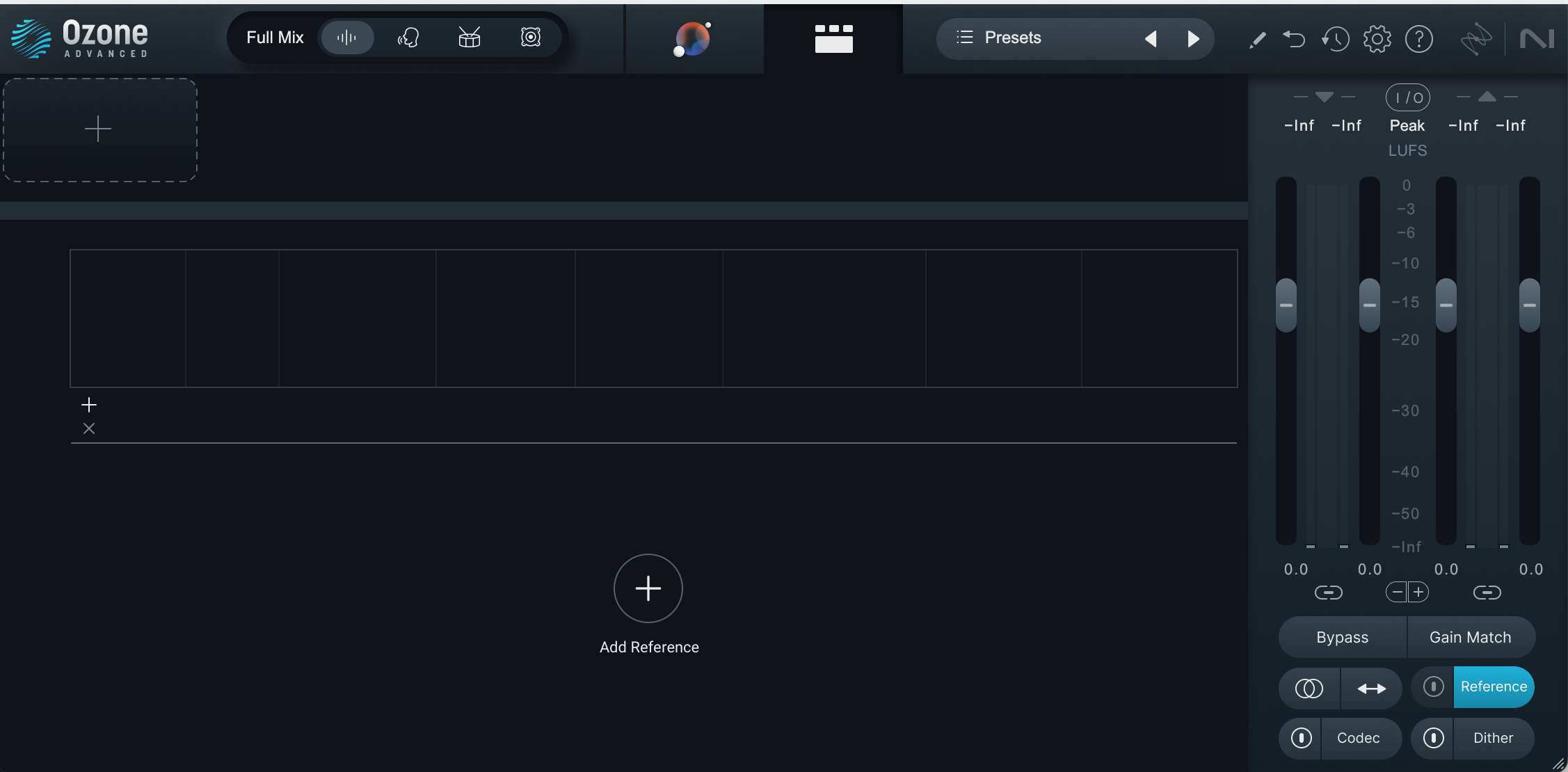
Referencing in Ozone
Metric AB is also a wonderful tool for this.

ADPTR AUDIO Metric AB
Tonal Balance Control on the other hand, can import the overall curve of your reference tunes, if you want a visual check as well as an aural one. (You can also do this in Ozone!)

Tonal Balance Control
And finally, there’s Audiolens, which can capture the curve off of streaming audio, making it easy to analyze references you don’t own in a physical capacity.

Audiolens desktop app
At the end of the day, whether you lean on references or work without them, the goal remains the same: making music that sounds great. The right tools – and the right mindset – can help you get there.
